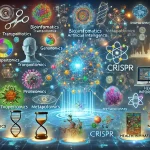
Introduction to Proteomics tools
November 1, 2020In the comprehensive analysis of living systems, genomics and transcriptomics, proteomics is a third challenge momentarily. It is also the most difficult of these challenges. Proteins are much more diverse and hard to quantify than nuclear acids, and their expression varies in both time and space, as opposed to DNA.
Database is the first tool. Protein, ESTs, and entire genome sequence databases provide a complete catalogue of all proteins expressed in organisms available in databases.
Based on analysis of all Drosophila coding sequences, we know , for example, that 110 Drosophila genes are code for proteins with EGF-like domains and 87 protein genescatalytic domains with tyrosine kinase. Therefore, when you do Drosophila proteomics, we’re looking for a large but known index potential proteins. When searched with limited information sequence.
We can identify a protein or even raw mass spectral data. Component of a database entry match.Mass spectrometry (MS) is the second tool. Instrumentation for MS in the last decade underwent tremendous change, culminating develop highly sensitive, robust tools, particularly proteins and peptides, which can reliably analyse biomolecules. MS instruments can offer three types of analyses, all of them very useful in proteomics. First, MS can provide molecular accuracy intact protein mass measurements as large as 100 kDa or more.
Thus, MS analysis is the best way to estimate protein masses rather than migration on sodium sulphate polyacrylamide gel electrophoresis (SDS-PAGE). However, extremely accurate protein mass measurements are usually of limited value because they are frequently not sensitive enough and because net mass is often inadequate to identify unequivocally protein. MS can also provide accurate mass measurements of proteolytic digested peptides. Peptide mass measurements can be made with higher sensitivity and mass accuracy, in contrast to whole protein mass measurements. Data can be searched directly from those peptide mass measurements.
Often to obtain a definitive identification of target proteins against the databases. Finally, sequence analysis of peptides obtained from proteolytic digests may be performed through MS analysis. In fact, in peptide sequence analysis, MS is now considered the state of the art. MS the most powerful and unambiguous approach is sequence data to identify protein.
An emerging software collection that can match MS data with certain protein sequences in the third essential tool for proteomics databases. Databases. As mentioned earlier, the sequence of can be determined.
A MS data peptide. But this de novo sequence interpretation is a relatively complex task , especially when hundreds or thousands of spectra must be interpreted. These software instruments MS data and match it to protein, EST, and sequences.
Genome-sequence databases using special algorithms. The most useful aspect of these tools is the automated processing. Survey of large quantities of protein-sequence matching MS data. The investigator can then inspect the results and assess the quality of the data in far less time than each spectrum would need to be interpreted
Manually.
The fourth key tool in proteomics is protein-separation analytical technology. Protein separations are used in proteomics for two purposes.
First, complex protein mixtures are simplified by resolving them single proteins or small protein groups. Secondly, because they are It is also possible to compare apparent differences in protein levels. Protein analytical separations allow researchers to target specific proteins for analysis between two samples. SDS-PAGE (2D-SDS-PAGE) is certainly most associated with proteomics.
Two-dimensional gels may be the best single technique protein resolution in a complex sample. Othere may be useful instruments of analytical protéomics, however, for other techniques of protein separation, including 1D-SDS-PAGE, high-performing liquid chromatography (HPLC) and capillary electrophoresis ( CE), isoelectric focusing (IEF), and affinity Chromatography.
The integration of different protein and peptide separations as multidimensional techniques is perhaps most powerful. In conjunction with reverse phase (RP)-HPLC, for example, ions-exchange liquid chromatography (LC) is a powerful tool to solve complex peptide mixtures.
The integration of these four instruments provides the latest proteomics technology. Each of these capabilities evolves quickly from a technical point of view.















